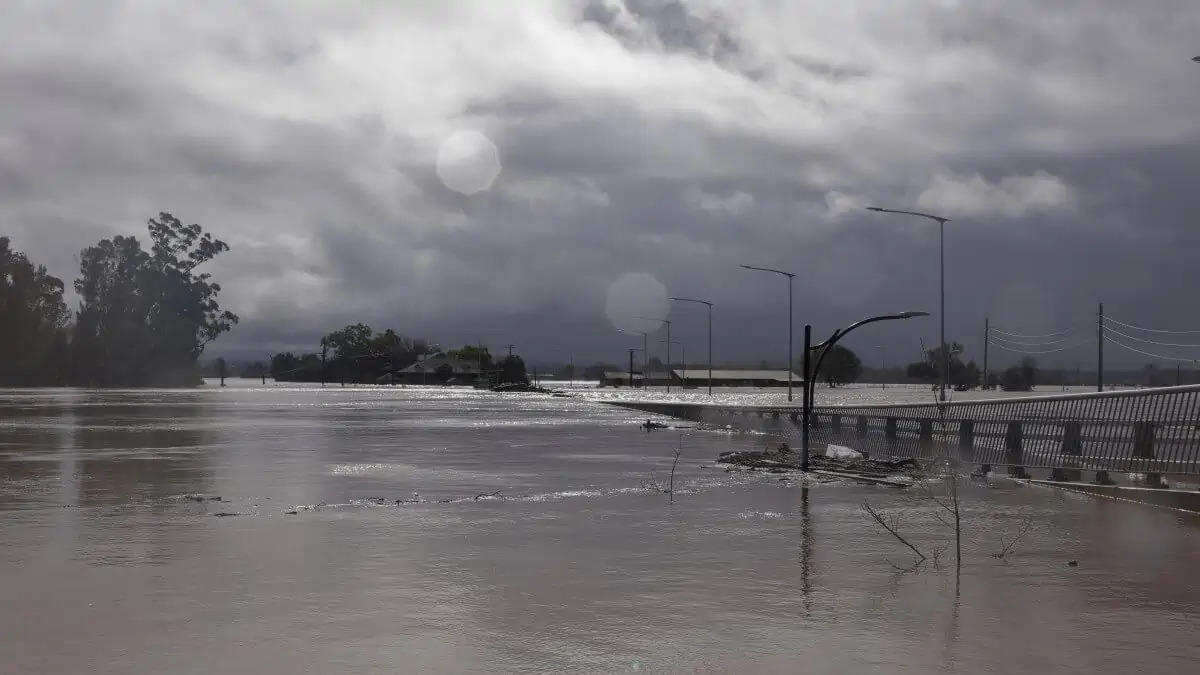
Parts of New South Wales are being inundated for the third time in four months as yet more record-breaking rain causes flooding to Sydney and beyond. Add to this the March 2021 floods and it’s the fourth time in two years that some people have watched parts of their homes go under water.
Flood risk has been known to Sydney for nearly as long as Sydney as a European settlement has existed. In 1817, for instance, governor Lachlan Macquarie sent numerous letters warning colonists against building on floodplains. First Nations people have had tens of thousands more years to manage and avoid floods.
Climate change will only exacerbate this. So: why are we still building in the path of floods – and what would it take to stop doing it?
“People built on them in the past because there was quite a high degree of ignorance,” says Professor Jennifer McKay, a researcher in environmental management and business law at the University of South Australia.
This is no longer a good excuse, according to McKay. “No ignorance is possible of the scientific evidence about floodplains. Where there’s a floodplain, there will be a flood,” she says.
Now, the incentives for developers and local councils outweigh the perceived flood risk. Knowledge hasn’t stopped massive developments and influxes of people in flood-prone parts of Western Sydney, which now faces an overflowing Warragamba Dam and a subsequent rising Hawkesbury River.
“Prior to 2021 the previous big flood was 1990 – and this, to me, is the problem,” points out Dr Ian Wright, a senior lecturer in Western Sydney University’s School of Science.
“We’ve had 31 years relatively flood free – my criteria is there’s been no major floods, exceeding 12.2m at Windsor, which is the threshold for what is considered a major flood in the Hawkesbury.”
The three-decade gap, and the growth of Sydney’s population, means there’s little community memory of flood risk.
“Perhaps the height of bridges, or escape routes, hasn’t been top of mind of the community, industry or the elected leaders. It certainly is on top of mind now,” says Wright.
“Warragamba, in a day, has spilled pretty much what Sydney drinks in a year over this last weekend.”
So what should happen?
“The statutes in every state that enable development approval very rarely include the need for the potential area to be assessed for hazards, either fire or flood, and that’s what needs to change,” says McKay.
Development approvals are managed by the states, but McKay thinks there’s a role for the federal government to play too.
“The Commonwealth could step in here and create a law because they’ve got plenty of power. But obviously, it’s politically not expedient to do so,” says McKay.
Wright agrees, suggesting there’s space for such a law under the Environmental Protection and Biodiversity Conservation Act.
“I think a floodplain – and particularly the Hawkesbury-Nepean, which is also the water supply for five million people – that’s a matter of national environmental significance, so it slots neatly into legislation,” says Wright.
McKay adds: “We need to have a decent royal commission on this.
“We need to look at all the state laws, point out what’s wrong with them and get the federal government involved in getting the states to make sure that this issue is considered.”
The housing and rental market being what it is, a house built on a floodplain will still be lived in by someone – but they’re likely to be more economically vulnerable than people who can afford to live in less risky areas.
“Government should be looking at the longer-term, broader perspective, particularly for people who are deprived economically,” says McKay.
“Just letting the market send them to the cheapest places is going to create many more costs in the long run.”